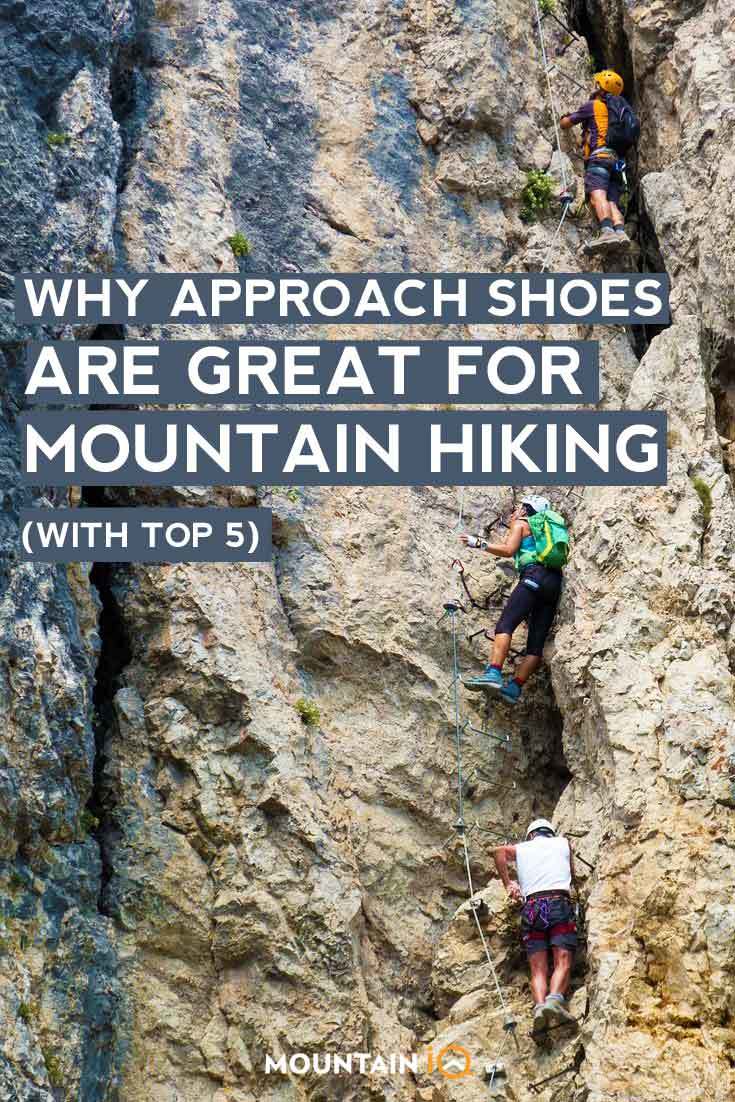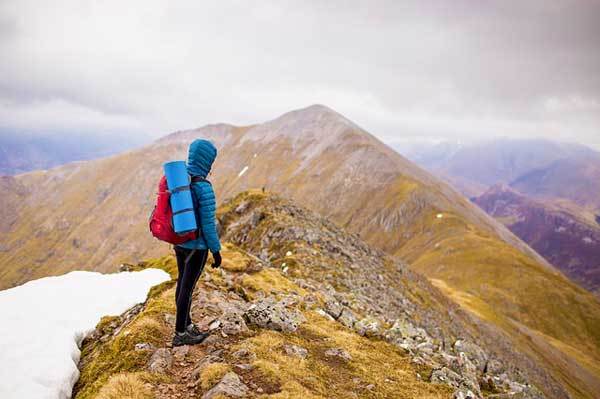Choosing the best approach shoe is simple with the La Sportiva Boulder X around. Designed to withstand any terrain you throw at it, this beast is built to last!
For a more budget option, I'd check out the Scarpa Crux without having to compromise on quality.
If you want a bit more luxury and comfort, then the La Sportiva TX4 is definitely your top choice.
Best Approach Shoes (Top Picks)
Best Overall
Best Value
Best For Long Approaches
This article contains affiliate links. If you buy something through the links on this page, we might get a small commission. It will not affect your price but helps keep our site alive!
Top Approach Shoes (Detailed Reviews)
We reviewed over 15 approach shoes for this article. Below are the best approach shoes that made our short list.
- La Sportiva Boulder X - Best Overall
- Five Ten Guide Tennie
- Scarpa Crux - Best Value
- Arc'teryx Arakys Ultralight
- La Sportiva TX4 - Best For Long Approaches
Read our complete buyers guide for approach shoes.
1. Best Overall Approach Shoes
Durable, yet versatile, the La Sportiva Boulder X is your go-to approach shoe for year-round performance. Featuring plenty of padding underfoot for comfort during long approaches, the Boulder X is ready for long days in the mountains.
Plus, with a super sticky Vibram Idro-Grip rubber outsole, the Boulder X easily provides traction on all rock types, even when wet. The Boulder X even has the same lacing system found in the popular Mythos climbing shoe to provide a highly adaptable fit for all feet.
Best used on technical terrain where friction is critical, the Boulder X is a solid choice for climbs that are off-the-beaten-path.
Check Prices
Main Features
What we like
What we dislike
Key Takeaway
Made to handle any approach, the La Sportiva Boulder X are a great option for when the weather just doesn’t want to cooperate. However, due to their heavy-duty build, these shoes can get a bit warm in hot climates.
2. Best Approach Shoes For Bad Weather
The Five Ten Guide Tennie is the uber-classic approach shoe that’s made for use wherever your adventures might take you. With a low-profile and a lightweight construction, the Guide Tennie is ready for a miles-long approach or a quick trip up some low angled terrain.
Made with the same great Stealth C4 rubber found on Five Ten’s climbing shoes, the Guide Tennie offers impeccable friction in a comfortable package. Plus, with water-resistant leather uppers and a stiff midsole, the Guide Tennie can handle a bit of rain or tricky off-trail approaches.
Check Prices
Main Features
What we like
What we dislike
Key Takeaway
The Five Ten Guide Tennie is a great all-around approach shoe that can be used both on-and-off trail for a variety of conditions. That being said, the relatively narrow last of these shoes makes them less than ideal for wide feet.
3. Best Value Approach Shoes
Equally stylish in the city as it is useful at the crag, the Scarpa Crux is ready for all of life’s challenges.
Made with a water-resistant suede leather upper, the Crux works well in a variety of different terrain. Plus, with a protective rubber toe cap and heel tension technology to provide lateral support, the Crux is burly enough for rugged terrain.
Vibram’s dual density Mega-Grip rubber outsole rounds out the Crux’s list of great features as it includes a smooth “climbing zone” near the toe to help you send, even when you don’t want to put your climbing shoes on.
At the same time, the Crux’s outsole features deep lugs for extra traction in muddy terrain, so there’s a lot to love with these approach shoes.
Check Prices
Main Features
What we like
What we dislike
Key Takeaway
The Scarpa Crux is an affordable, yet versatile approach shoe for climbers on a budget. It performs well in a variety of different environments but doesn’t excel in any one in particular.
4. Best For Light & Fast Climbs
Arc’teryx is known for being an industry leader in high-quality outdoor gear and the Arc'teryx Arakys is no exception. Made using Arc’teryx’s advanced footwear technology, the Arakys is a technical approach shoe that functions just as well in the city as it does on the trail.
Made with an Adaptive Fit Lite liner, the Arakys shapes to the foot but allows for lots of airflow for maximum comfort in warm environments. Plus, it features a rugged Vibram rubber outsole for exceptional agility and friction, even on difficult terrain.
Check Prices
Main Features
What we like
What we dislike
Key Takeaway
The Arc'teryx Arakys Ultralight is a high-quality approach shoe that is best used on light and fast missions in the mountains. As with everything made by Arc’teryx, though, you’ll have to spend some of your life’s savings to be able to afford the Acrux SL.
5. Best For Long Approaches
Designed for both durability and comfort, the La Sportiva TX4 is a workhorse on long approaches.
Featuring Vibram Mega-Grip rubber for exceptional traction on all terrain, the TX4 helps you move confidently, even at the end of a long day on the rock.
A durable leather upper provides high levels of comfort while staying abrasion-resistant and durable during off-trail travel.
The La Sportiva TX4 comes complete with the company's patented STB Control System, which allows for an incredible amount of torsional rigidity for a low top shoe.
Plus, the TX4’s revolutionary Trail Bite Heel Breaking Platform provides an extra layer of traction on the slickest of slopes.
Main Features
What we like
What we dislike
Key Takeaway
The La Sportiva TX4 is a solid shoe that brings a good mix of durability and comfort to the approach shoe world. It could easily double as a hiking shoe for scrambling days in the mountains but excels during long approaches to remote climbs.
Approach Shoes - Buyer’s Guide (Key Features)
Before you hand over your credit card to buy those new approach shoes, it’s important to familiarize yourself with the basics of approach shoe construction and design.
Doing so can help ensure that you’re making an educated purchase and picking out the best pair of approach shoes for your needs. Here are some of the need-to-know features of approach shoes:
Upper Material
The “upper” of a shoe is the bit of fabric that wraps around your foot and connects to the rubber outsole. Uppers are made from a wide variety of different materials, but in approach shoes, you’ll most commonly find leather, mesh, canvas, or synthetic nylon fabrics.
Leather is perhaps the most common of the approach shoe uppers because it offers a range of benefits, including increased durability, water-resistance, and a good degree of protection from rocks and debris for your feet.
That being said, leather upper usually stretches out over time, which decreases the amount of support and stability they can offer. Plus, this stretch could make your approach shoes feel less stable when you’re climbing 3rd or 4th class terrain.
Mesh and canvas uppers on the other hand, tend to be a bit lighter and more breathable than leather, which makes them ideal for use in warmer environments.
However, the features of both mesh and canvas that make them light and breathable materials also means that they are less durable than leather, less water resistant, and not as great for climbing.
Rubber
Perhaps the most important feature of an approach shoe is the rubber outsole. Without these specifically-designed rubber outsoles, approach shoes would be just like every other low-top hiking shoe out there and would offer no real benefit to people scrambling on exposed terrain.
Thus, most approach shoes come outfitted with high-end rubber, such as Vibram’s Mega-Grip or Five Ten’s Stealth C4. Although there are some differences between the rubber types on the market, it’s actually quite difficult for most people to tell them apart.
Lug Pattern
In addition to the rubber compound used in an approach shoe, the actual design of the outsole matters quite a bit. In fact, the lug pattern of an approach shoe can make a huge difference in its climbability and versatility as a hiking shoe.
For example, the lug pattern found on the Five Ten Guide Tennie uses a unique “dot” pattern, which offers excellent traction on slabby approaches, but fails to live up to expectations on exceedingly muddy terrain.
Other shoes, such as the Scarpa Crux, have a more traditional lug pattern that performs better on the trail than it does on the rock.
Weight
Since approach shoes are supposed to be a lightweight climbing-specific alternative to hiking shoes, it makes sense that weight is an important consideration when it comes to picking out a pair of approach shoes.
Indeed, the weight of your approach shoe is important, not only because a heavy pair can drag you down on the trail, but because you may also have to carry your shoes on your climb.
Especially for climbs that you’ll have to walk off of, you’ll want to choose the lightest, most compact approach shoes you can find.
But, since lighter approach shoes are often made with non-leather uppers and less rubber, they sometimes offer less overall protection and durability than a heavier model. There are always tradeoffs to consider, so it really comes down to what you value most in your approach shoes.
Sizing
Another really important thing to consider when buying approach shoes is the size of the shoe itself. Unlike street shoes, which most people like to wear a little loose, you want your approach shoes to be snug so they perform better on steep terrain.
However, you don’t want to size your approach shoes as small as your climbing shoes or you won’t want to wear them on a long approach.
Thus, while sizing down on your approach shoe can help your scrambling and low-angle climbing ability, you will need to sacrifice some comfort for that benefit. Therefore, it’s best to find a middle ground between climbability and comfort when buying approach shoes.
Continue browsing
See more equipment reviews and our detailed outdoor footwear guide. Or check out these reviews:







